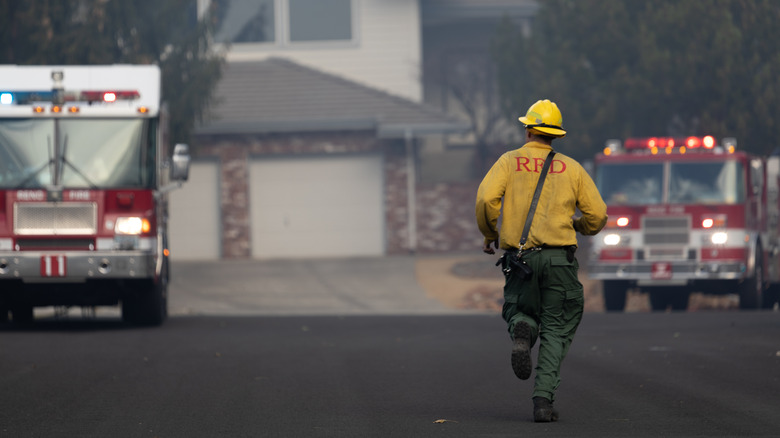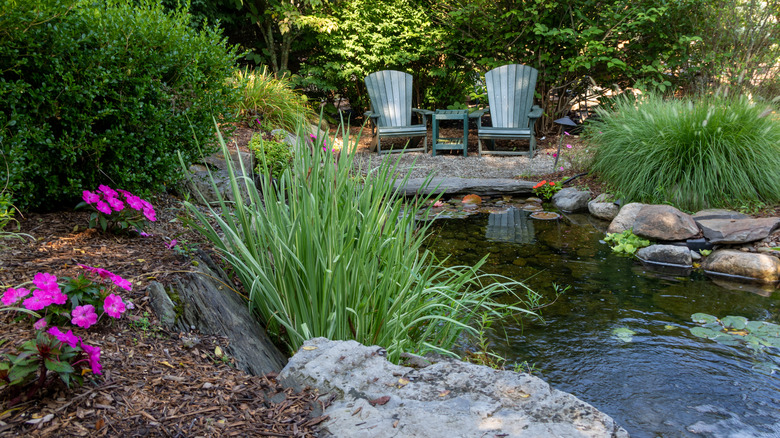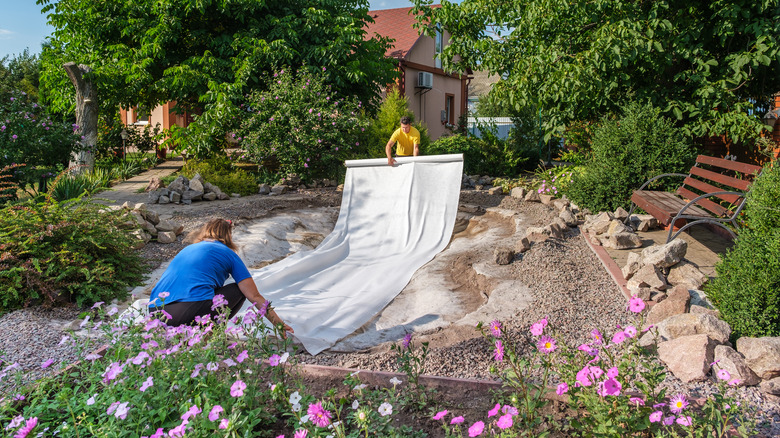The Backyard Feature That May Help If You Live In A Fire-Prone Area
Living in a fire-prone area can come with added stress. While fires are unpredictable, there are certain safety and firescaping measures you can take to make your home more resistant to wildfires, which can also help you feel more at ease. The Federal Emergency Management Agency (FEMA) recommends fortifying your roof, keeping your gutters free from debris, and implementing systems to easily retrieve water. One backyard feature that can help with the last tip is to have an accessible body of water on site.
Water features like ponds and pools have various benefits. They boost the value of your home while providing a space to relax and connect with nature. They also provide a great alternative to growing and caring for grass, which conserves the many resources required to maintain a lawn. When designed properly and intentionally, these fixed bodies of water can slow the spread of a fire, which could save your home. Ponds, which are typically filled with rainwater, groundwater, or redirected water from a close natural source, are especially great to have in any type of emergency since they contain fresh water.
How water features can help
One way to use your pool or pond in a fire-prone area is as a source for sprinklers that can function when the power is out. To do this, you'll need a portable pump, suction hose, pipes, sprinkler heads, and a fire protection expert to handle the installation. Setting up these sprinklers to operate around your home can protect your space in the event of a fire. These can also make it one less place for the firefighters' limited water to have to go to, providing them with more resources to save your home with.
A fire retention or protection pond can also be used as a source for a dry hydrant, or one that isn't pressurized but can be pumped when needed. A pond could also be placed in a break zone to stop the spread of a fire. Your fire department can advise on the best way to construct a pond on your property. Then, you can reach out to the appropriate bodies to guide you on the next steps. If a pond isn't a feasible solution for your yard, other ideas include adding a well or large water storage tank. However, make sure that these can also be easily accessed by firefighters in an emergency.
Adding a pond to your home
Before you start work on a fire retention pond, first find out which federal or state permissions or exemptions you need to use the water and how you can zone your property. Your local Natural Resource Conservation Service (NRCS) office and zoning board can help. When choosing the location, avoid wetland areas and spaces where contaminated substances can run down into the pond. You may also want to place your pond between your home and where fires are likely to spread from. And, you should consider how much water you would need to put out a wildfire to determine how large and deep the pond should be. While you can DIY with a home kit, it may be better to let professionals handle the digging, construction, and technical work.
The main materials needed include a liner, filter, and pump. It helps to line the pond walls with both clay and a geomembrane material so the water doesn't seep out over time. The dry hydrant should be installed in a clear area where it can be easily accessed and have reflective signs so it's easy to spot in the dark. It should also be maintained regularly by ensuring the underwater intake pipe remains free from obstructions. If there's no dry hydrant, the pond needs a level, sturdy, unobstructed edge so that fire supply lines can easily pass through from the road.


